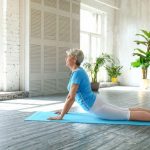
As the weather warms, folks are bringing out their bicycles for a ride. That’s great, but it’s important to be ready for a safe biking season: The national rate of bike accidents is two fatal crashes and 2,630 accidents requiring emergency room visits every week. Angela Mountz, community car seat safety program coordinator at Penn State Health Children’s Hospital in Hershey, offers some tips for parents to help their young cyclists avoid serious childhood riding accidents. “I had a cousin who was hit by a car [while on a bike],” Mountz said in a hospital news release. Mountz’s cousin didn’t die, but suffered from the injuries for the rest of his life. “Kids go around thinking, ‘It’s not going to happen to me,’” she said. “But it’s so important to protect yourself.” A helmet is at the very top of her list. The odds that a child will suffer a serious injury if involved in a crash while biking go up 40% if they’re not wearing a helmet, Mountz said. Parents should also wear a helmet while riding: “We need to teach them by example,” Mountz said. Aim for safety over style, Mountz added. Look for a sticker from the American National Standards Institute or the Snell Memorial Foundation to be sure your child’s helmet is certified. Check your kids’ helmets every two months to… read on > read on >





























-300x200.jpg)







-300x169.jpg)
